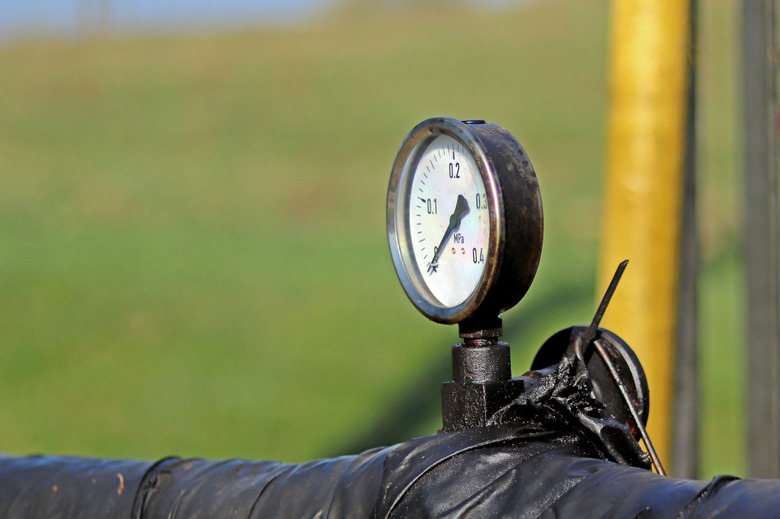What Is A Manometer?
A manometer may be any device that measures pressure. However, unless otherwise qualified, the term "manometer" most often refers specifically to a U-shaped tube partly filled with fluid. You can easily build this type of manometer as part of a laboratory experiment to demonstrate the effect of air pressure on a liquid column.
TL;DR (Too Long; Didn't Read)
A manometer is a scientific instrument or gauge that measures pressure.
Building a Manometer
Building a Manometer
A simple manometer can be built by partially filling a clear plastic tube with a colored liquid to allow the fluid level to be easily observed. The tube is then bent into a U-shape and fixed in an upright position. The levels of the fluid in the two vertical columns should be equal at this point, as they are currently exposed to the same pressure. This level is therefore marked and identified as the zero point of the manometer.
Measurement of Pressure
Measurement of Pressure
The manometer is placed against a measured scale to allow any difference in the height of the two columns. This height differential can be used directly to make relative comparisons between different test pressures. This type of manometer can also be used to calculate the absolute pressure when the density of the liquid in the manometer is known.
How it Works
How it Works
One end of the tube is connected with a gas-tight seal to a test pressure source. The other end of the tube is left open to the atmosphere and will therefore be subjected to a pressure of approximately 1 atmosphere (atm). If the test pressure is greater than the reference pressure of 1 atm, the liquid in the test column is forced down the column. This causes the fluid in the reference column to rise by an equal amount.
Calculating the Pressure
Calculating the Pressure
The pressure exerted by a column of fluid can be given by the equation P = hgd. In this equation, P is the calculated pressure, h is the height of the fluid, g is the force of gravity and d is the density of the liquid. Because the manometer is measuring a pressure differential rather than an absolute pressure, we use the substitution P = Pa – P0. In this substitution, Pa is the test pressure and P0 is the reference pressure.
Example: Manometer use
Example: Manometer use
Assume that the fluid in the manometer is mercury and the height of the fluid in the reference column is .02 meters higher than the height of the fluid in the test column. Use 13,534 kilograms per cubic meter (kg/m3) for the density of mercury and 9.8 meters per second squared (m/s2) for the acceleration of gravity. You can calculate the pressure differential between the two columns as:
\(hgp=0.02\times 9.8\times 13,534 = 2,653\text{ kg/ms}^2\)
For units of pressure, you can use the pascal, with approximately 101,325 pascals equalling 1 atm of pressure. The pressure differential in the manometer is therefore:
\(P_a-P_0=\frac{2,653}{101,325}=0.026\text{ atm}\)
So, the pressure in the test column (Pa) is equal to:
\(P_0+0.026 = 1 + 0.026 = 1.026\text{ atm}\)
Cite This Article
MLA
Robinson, Allan. "What Is A Manometer?" sciencing.com, https://www.sciencing.com/manometer-2718/. 5 December 2020.
APA
Robinson, Allan. (2020, December 5). What Is A Manometer?. sciencing.com. Retrieved from https://www.sciencing.com/manometer-2718/
Chicago
Robinson, Allan. What Is A Manometer? last modified March 24, 2022. https://www.sciencing.com/manometer-2718/
